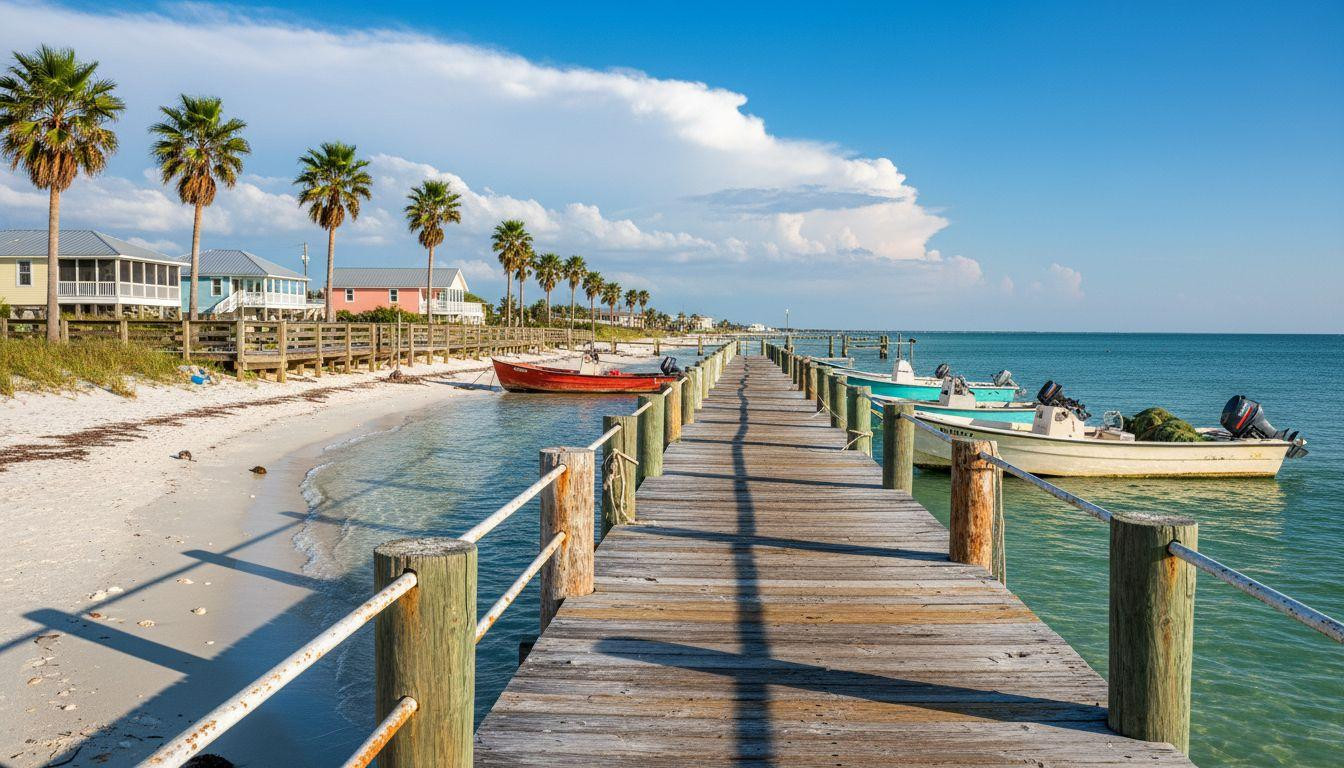Forget Miami Beach where $400 nightly hotel rates drain vacation budgets before you reach the sand. America’s coast harbors 20 overlooked towns where $80-150 buys waterfront access, free beach parking replaces $35 daily fees, and locals still outnumber tourists. These Gulf Coast gems, Atlantic hideaways, and Pacific Northwest retreats deliver identical coastal experiences at 70% lower costs than famous resorts.
Why famous beach resorts lost their appeal
Miami Beach welcomes 30 million visitors annually into spaces designed for 90,000 residents. Resort fees add $45-75 to advertised rates. Beach parking costs $35 daily when available.
Myrtle Beach processes 15 million tourists through 35,000 resident infrastructure. Traffic crawls for miles during peak season. Restaurant waits stretch 90 minutes for mediocre chain food.
The real cost of paradise
A Miami Beach weekend totals $1,200 after hidden fees. Resort breakfast runs $28 per person. Beach chair rentals cost $40 daily.
Compare Pascagoula, Mississippi where $89 buys waterfront hotels. Breakfast costs $10 at local diners. Beach access stays free year-round with plenty of parking.
Meet America’s most underpriced coastal towns
Pascagoula emerged as 2025’s most affordable beach destination. This Gulf Coast port town of 22,000 welcomes just 500,000 annual visitors. Hotels average $80-150 nightly versus Miami’s $400-600.
Venice, Florida offers shark tooth hunting on 12 miles of white quartz beaches. Accommodations run $90-175 nightly. The town preserves its 1920s Mediterranean Revival architecture without resort development pressure.
Gulf Coast quiet
Port Richey sits 45 minutes from Tampa with $85-170 nightly rates. This 3,500-resident community offers Gulf sunsets without crowds. Local tourism boards report minimal infrastructure strain despite 15% visitor growth.
Port Lavaca, Texas provides authentic fishing culture for $80-165 nightly. The town’s 12,000 residents welcome 400,000 annual visitors (98.7% fewer than Miami Beach). Fresh seafood costs half of resort prices.
Atlantic alternatives
Surfside Beach, South Carolina sits 10 minutes from Myrtle Beach’s attractions. Accommodations cost $85-170 versus Myrtle Beach’s inflated rates. This 4,000-resident town maintains small-town atmosphere with 97.5% fewer visitors than Miami.
Ocean Shores, Washington stretches 28 miles along Pacific coastline. November through April brings razor clamming season. Hotels cost $90-175 with free beach access and parking.
What you actually experience
Morning walks happen in solitude at 7am. Local residents fish from piers while resort guests sleep off expensive nights. Parking spaces sit empty even during peak season.
Restaurants serve locals first, tourists second. Fresh catches arrive daily from working fishing fleets. Breakfast costs $8-14 versus resort’s $28 continental spreads.
Beach access without barriers
All 20 destinations offer free beach entry year-round. No wristbands, day-use fees, or resort restrictions. Parking stays free at most locations with ample spaces available.
Corpus Christi provides 100 miles of beaches including Padre Island National Seashore. The city’s 320,000 residents support infrastructure for 2.5 million annual visitors without overwhelming crowding.
Community over commerce
Shrimp festivals, fishing tournaments, and harvest celebrations welcome visitors into authentic traditions. Local art galleries showcase regional artists, not mass-produced resort souvenirs.
Venice’s Shark Tooth Festival celebrates fossilized teeth washing ashore for millions of years. Visitors hunt prehistoric treasures on uncrowded beaches using $15 screen sieves instead of expensive resort activities.
Smart planning for maximum savings
Gulf Coast destinations peak October through April with 70-75°F temperatures. Pacific Northwest towns shine June through September for warmest weather. Atlantic alternatives offer shoulder seasons May and September with 60% fewer crowds.
Budget travelers gravitate toward Pascagoula’s $75-95 nightly rates and free activities. Families choose Surfside Beach for safe swimming and nearby attractions. Retirees prefer Venice’s community-focused environment and walkable downtown.
Recent visitor surveys show 85% satisfaction rates across these 20 destinations. Tourist spending supports local businesses without overwhelming infrastructure. Travel research demonstrates equivalent beach quality at dramatically lower costs.
Your questions about cheap alternatives to expensive hotspots answered
Which destinations offer the biggest savings compared to famous resorts?
Pascagoula delivers 80% savings versus Miami Beach with $75-95 nightly rates versus $400-600. Port Richey saves 75% with $85-110 rates. Ocean Shores provides 72% savings at $90-115 nightly. All include free parking worth $35 daily at major resorts.
What’s the best time to visit these overlooked coastal towns?
Gulf Coast towns (Pascagoula, Port Richey, Venice) excel November through April with 60-75°F temperatures and minimal crowds. Texas destinations peak October through April. Pacific Northwest locations shine June through September with 60-70°F highs and dry weather.
How do beach quality and amenities compare to famous resorts?
Venice offers 12 miles of white quartz sand comparable to Sarasota. Corpus Christi provides 100+ miles including America’s longest uninterrupted beach. Ocean Shores stretches 28 continuous miles. All feature free access, adequate facilities, and seasonal lifeguards without resort crowding.
Dawn breaks over Port Lavaca’s fishing pier as local boats return with fresh catches. Seagulls circle overhead while gentle waves lap against empty shores. The coastal experience doesn’t require premium prices, just willingness to look beyond marketing hype.
